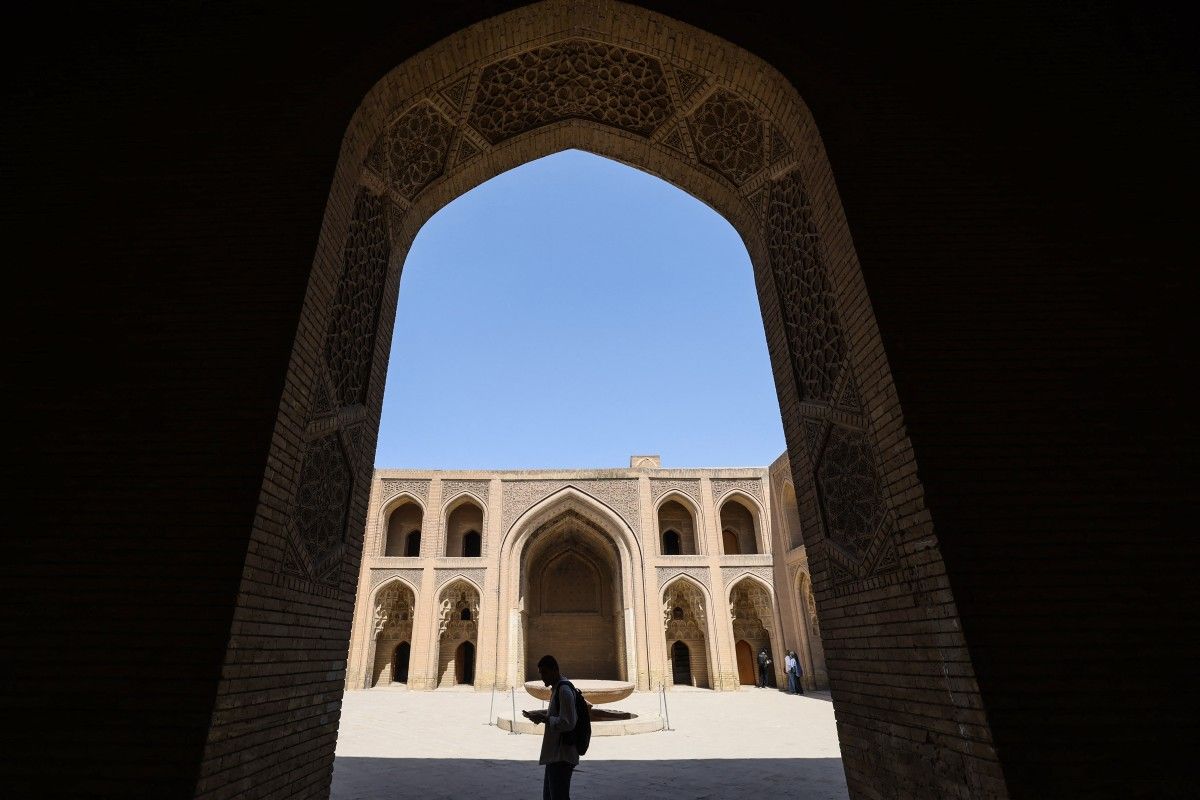
As Baghdad emerges from years of turmoil, a walking tour of the city’s historic center showcases its architectural heritage, signaling a renewed interest in preserving its cultural identity.
In a striking revival of Baghdad’s cultural landscape, an Iraqi professor led a group of students on a walking tour of the city's historic center, highlighting centuries-old landmarks once deemed unsafe to visit. The tour paused at a formidable stone wall built to protect the city from Mongol invaders, a testament to Baghdad's rich past.
Professor Muaffaq al-Tai, 83, passionately recounted the history of the wall, drawing the attention of students wielding smartphones and cameras. “Several caliphs worked on it,” he noted, emphasizing the significance of these historical structures. The tour took place amid an autumn heatwave, but enthusiasm was palpable among organizers like 23-year-old architecture student Abdullah Imad. “Before, there were security events... interest was limited, almost non-existent,” he explained. “Now, interest is growing... Stability has gradually returned to Baghdad.”
Vibrant cultural scene
Founded in 762 AD by Abbasid caliph Abu Jaafar al-Mansur, Baghdad has long been a crucial center for Arab and Islamic culture. The city flourished throughout the 20th century, boasting leading universities and a vibrant cultural scene. However, decades of turmoil—ranging from sectarian violence post-2003 U.S. invasion to the rise of the Islamic State group—had devastating effects on its infrastructure and heritage.
Since the defeat of ISIS in 2017, a fragile stability has allowed for renewed focus on Baghdad's cultural revival. Approximately 30 students and amateur photographers explored the historic downtown, where they marveled at an 800-year-old Abbasid palace with intricately designed brick facades, and the 12th-century Bab al-Wastani, or Central Gate, surrounded by imposing battlements.
Source of hope
Fatima al-Moqdad, a 28-year-old architect, expressed hope in the growing interest in Iraq's heritage, calling it “a source of hope for a positive change in our identity.” She added, “When young people surf the internet, they see how other nations look after their heritage. They want and deserve the same.”
Baghdad, home to nine million residents, bustles with life, where tuk-tuks and motorcycles navigate crowded streets lined with vendors selling fish, sunglasses, and counterfeit sneakers. The historic center, featuring a mix of brutalist 1960s architecture and ornate 1920s facades, reveals a city layered in history.
Though about 2,400 buildings are registered in the historic area, approximately 15 percent have been destroyed or significantly altered, reflecting the impact of decades of upheaval. Many structures once belonged to Jewish families and other communities that were displaced during conflicts, leading to a significant loss of expertise in architectural preservation.
Soul of old Baghdad
In response to the pressing need for restoration, the municipality, in collaboration with private banks, has initiated two major projects, including the revitalization of Al-Mutanabi Street, renowned for its bookstores. This effort aims to restore sidewalks, enhance lighting, and clean façades, despite challenges such as obtaining permissions from absent property owners and limited funding.
The next focus for the Baghdad municipality is Al-Rashid Street, a historically vital thoroughfare. “It’s the soul of old Baghdad,” stated communications head Mohammed al-Rubaye. Currently, the street is dominated by warehouses and industrial operations, but plans are underway to transform these spaces into shops, cafes, and cultural venues, encouraging residents to re-engage with their rich heritage.
With AFP
Comments